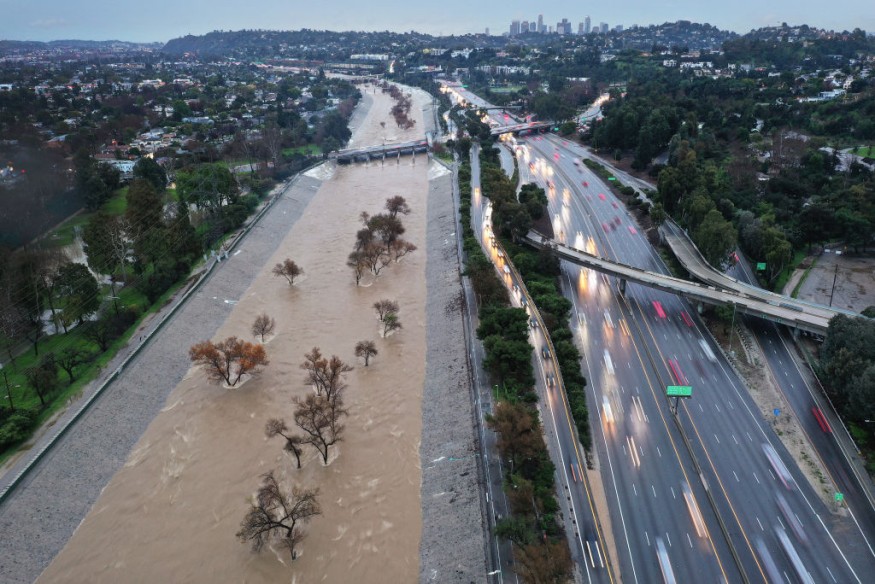
Roads in California turned into rivers as a strong storm hit the state and brought massive floods.
Weather experts said that a deadly and extreme atmospheric river overtook California beginning weekend, causing record rainfall, heavy snow and high winds.
These circumstances had shut down power to nearly a million people while snarling travel.
State Of Emergency In California Counties
The National Weather Survey predicted that a slow moving and relatively narrow axis of anomalous moisture would continue to focus across Southern California over the next 12 to 24 hours.
This weather condition will then maintain a significant risk for life threatening flash flooding across the Transverse Ranges and adjacent locations.
Officials said that areas of moderate to heavy rain are expected to remain in place near a cold front crossing the southern coast of California, just ahead of an upper level trough axis.
On the other hand, additional rainfall totals through Tuesday of 1 to 3 inches are expected for the urban corridor from Los Angeles to San Diego and into the foothills of the Transverse Ranges, with locally higher rainfall totals in areas of higher terrain.
This will fall on top of the 5 to 10+ inches of rain which has impacted Southern California over the past 48 hours.
Meanwhile, flooding of streams and rivers along with mudslides are expected to remain a threat.
While rain will continue for Southern California on Tuesday, the intensity is expected to be lighter than what occurred over the weekend as the storm system moves east into the Desert Southwest.
Winds were not as extreme but were unusually high across a wide area, which resulted in falling trees and knocking out power to nearly 900,000 customers on Sunday evening.
Due to the bad weather, Governor Gavin Newsom declared a state of emergency for eight California counties, including Los Angeles and San Diego.
Flash Floods, Higher Rainfall Rates
Meteorologists also said that the potential for flash floods and higher rainfall rates would expand into western Arizona, southern Nevada and southwestern Utah.
Meanwhile, heavy snow and strong winds will continue to generate near impossible travel conditions for elevations at/above 5000-7000 ft for southern portions of the Sierra Nevada into the mountains of central Nevada.
As the upper trough and surface cold front shift eastward through mid week, heavy snow will spread eastward into the higher elevations of Utah, Idaho, Wyoming, Colorado and New Mexico.
The central and eastern portion of the United States will remain fairly dry after a powerful storm system exits from the Southeast into the western Atlantic tonight.
Upper level ridging over the central US will continue anomalously warm for the Northern/Central Plains and Upper Midwest through Wednesday, according to meteorologists.
High temperatures in the 40s and low 50s are expected for the Upper Midwest on Tuesday and Wednesday, 20-30 degrees above average.
This will likely break daily record high temperatures. Meanwhile, high temperatures generally from the Rockies to the Northeast will be above average and mild.
Related Article : Los Angeles to San Diego Weather: Heavy Rainfall, Flooding Concerns Likely This Week
© 2025 NatureWorldNews.com All rights reserved. Do not reproduce without permission.





